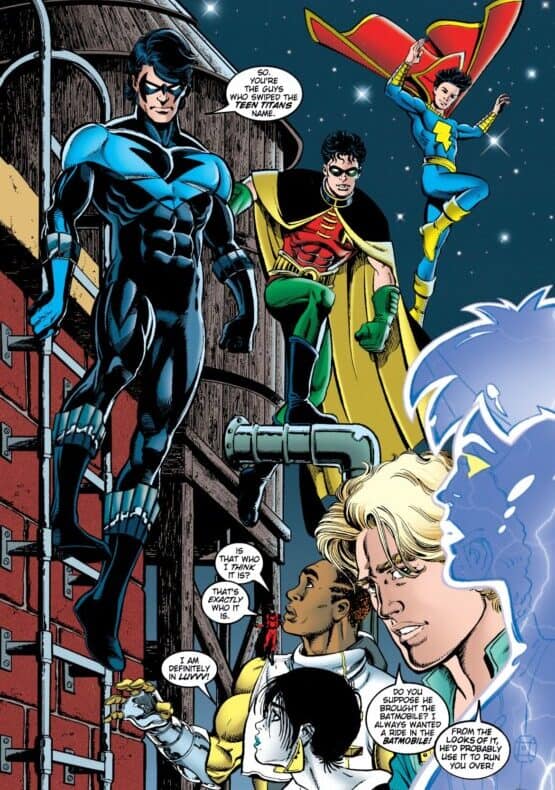***Contains Spoilers***
Dan Jurgens’ Teen Titans run (1996-1998) starts with a group of young, unfamiliar heroes—Argent, Risk, Prysm, Joto, and Omen—coming together with the Atom(de-aged Ray Palmer) to form a new version of the Titans under circumstances that initially feel unpolished. The series takes them on a journey to establish themselves as a cohesive team, deal with interdimensional threats, and carve out their own place in the DC Universe while slowly integrating veteran Titans into the narrative. While the run does have moments of intrigue and connection to the broader Titans mythos, it struggles to make itself feel essential, often weighed down by awkward pacing and inconsistent characterization.
What I appreciated about the run was how it eventually tied these new characters more deeply into Titans lore. The inclusion of Omen (later revealed to be Lilith) provided a surprising twist that made her feel integral rather than a Raven stand-in. Integrating Nightwing, Arsenal, Tempest, and Wally West into the later issues was a good move, helping ground the series in something familiar while still focusing on the newer team members. I also enjoyed the attempt to explore interpersonal dynamics within the group, particularly Argent’s growth and Prysm’s fish-out-of-water innocence. The death of Joto brought some emotional stakes, even if the fallout wasn’t as impactful as it could have been. There was also a clear attempt to channel the lighthearted, bantering tone of the Justice League International era, which worked in spots, though it felt out of place at times.
Unfortunately, this run doesn’t click for me overall. The new team never feels like they gel as a cohesive unit, especially early on. It’s hard to get invested in their journey when the characters themselves aren’t particularly compelling. Ray Palmer’s presence as a de-aged “mentor” felt awkward, especially with his constant refrain of “I’m Justice League,” which became grating very quickly. Risk’s edgy attitude and Argent’s initial superficiality didn’t help matters either. The pacing of the series was uneven, with a slow start that never fully gained momentum, and the attempts to tie the team’s adventures into larger DC continuity felt forced rather than organic.

By the time Fringe and Arsenal joined after Joto’s death, the series had begun to improve slightly, but it was too little, too late. While I can appreciate Jurgens’ attempt to make these characters and their stories relevant, the series never felt necessary to the broader Titans narrative. It’s an odd in-between run that didn’t establish the new heroes enough to make them memorable while also failing to capture the magic of classic Titans stories.
Ultimately, this run started as a 1-star experience for me, but the later connections to Titans lore, the inclusion of familiar faces, and the resolution of Omen’s arc brought it up to 2 stars. That said, I wouldn’t revisit it, nor would I recommend it unless you’re a die-hard Titans completionist.
Feature Image The Teen Titans #17 cover art by Dan Jurgens and Phil Jimenez
Keep NewToComics.com running with a donation or shopping with through our affiliates—your support helps maintain the site and continue guiding new readers into the world of comics!


